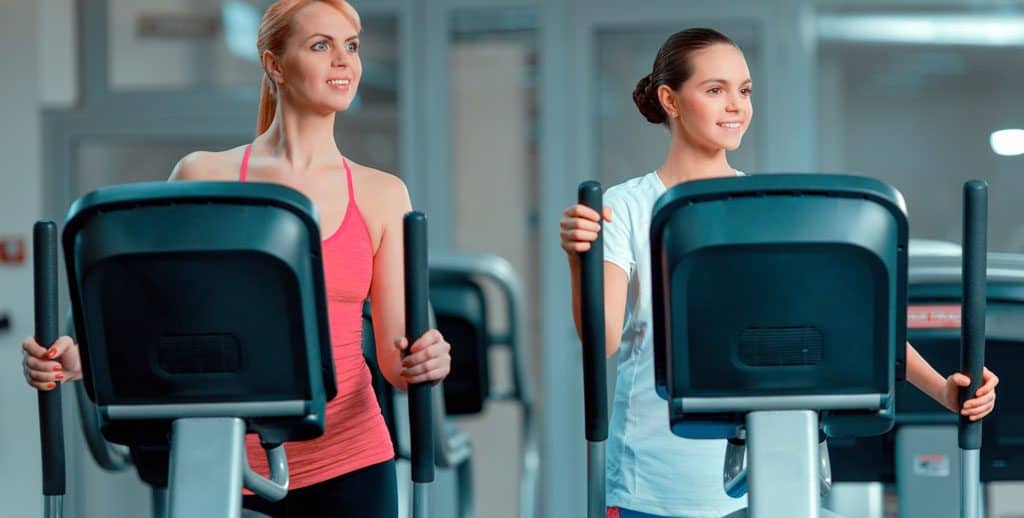Disadvantages of Elliptical Trainers
Elliptical trainers became popular in mid-199Os. These machines provide elliptical motion, a combination of running and cycling.
So, how does an elliptical trainer compare to other forms of exercise? If you look closely, you’ll notice that elliptical training has several benefits, as well as a few drawbacks. If you are looking to compare the best cross trainers available, check out our comparison article.
Let’s take a look at some of the reported disadvantages of elliptical trainers.
Low Impact
Elliptical trainers are well-known for cardio-muscular workouts. However, the low impact does not aid in the development of muscle strength. Moreover, low-intensity exercise does not offer promising results in bone strength.
As a result, in addition to elliptical trainers, you should include bone and muscle strengthening exercises in your workout routine.
Lack Of Weight-Bearing Exercise
Elliptical trainers do not evenly distribute pressure across the body. As a result, the lower body is more engaged than the upper body when using elliptical trainers, which makes it ineffective in preventing osteoporosis.
Instead, to strengthen the bones and muscles, you must apply weight to each bone and muscle in a harmonic manner.
Here is a helpful video on some of the other disadvantages of a cross trainer:
Does Not Promote Full Body Exercise
As mentioned above, despite the fact that elliptical trainers do have a spot for your arms to hold, it primarily focuses on the lower body. Since elliptical trainers do not concentrate on upper body strength building, it limits your exercises with them.
To integrate full-body strengthening, you have to add different activities. For example, you cannot have a quick workout when you are training on elliptical trainers.
Calorie Comparison
Thirty minutes of intense workout on an elliptical trainer burns 335 calories for a 155-pound person. In comparison, this may seem reasonable in numbers and better than other exercises like aerobics or weight lifting and cycling at moderate speed on a stationary bike.
At the same time, when you compare the calorie burn with these exercises with intense training, it burns way more calories. For example, cycling on a stationary bike at a speed of 6mph can get faster and better results in calorie burn than elliptical trainers.
Lack Of Coordination
The motion of elliptical trainers is not convenient for training. It feels unnatural when you start moving both hands and legs simultaneously, making you feel uncomfortable with elliptical trainers.
In addition, these machines lack coordination and rhythmic movement. The equipment can give better results if the hand and leg movements are in sync.
No Impact On Glutes
The glute is the excess fat in your buttocks. Glute fat is tenacious and requires regular exercise to burn. An incline on the exercise equipment is an effective way to burn glute fat.
On the other hand, the elliptical trainers do not have any inclination that targets the glute in your body.
Limited Scope
Elliptical trainers are appropriate for beginners. However, it is not suitable for high-intensity interval training (HIIT). A supplement exercise with the elliptical trainer machine is effective for a good workout.
So, you can consider a treadmill to supplement your cardiovascular training. But it again renders the elliptical ineffective.

Side Effects of Elliptical Machines
Aggravates Injuries
If you have injuries, then it is advisable to avoid elliptical trainers altogether. The elliptical trainers aggravate injuries and can cause further harm.
According to Damien Howell Physical Therapy, it is advisable to prevent elliptical trainers if you have foot injury with or without pain, Morton’s neuroma, bunion, or arthritis. This is because elliptical exercise requires being on your toes.
During elliptical training, the feet are in a fixed position, but the body is in movement. Putting your body in the same repetitive motion over an extended period can strain the joints and muscles.
Elliptical Trainers Might Lead To Knee Pain
Unnatural Strides
Typically, legs swing forward when you lift the feet above the ground, which is the natural movement helping the body move forward. But, in elliptical trainers, the feet remain planted, but it forces the body to move ahead.
Change in gait leads to a change in biochemical compensation through joints, which leads to an imbalance in the muscle and joint movements.
According to studies, the artificial motion from elliptical trainers can lead to straining of knees and hips, resulting in knee pain.
Imbalanced Forces
Your knees may hurt after a workout on an elliptical trainer due to imbalanced forces on your hips or thighs. Although elliptical trainers appear to be a full-body exercise, the focus is on the lower body. The machine places more strain on the knees and hips than a standard stationary bike or normal treadmill walking. As a result, it causes discomfort in the knees, thighs, and feet.
Are Ellipticals Bad For You?
Despite their benefits, elliptical trainers do have some drawbacks. For cardiovascular training, there is other gym equipment that provides effective results in lesser time. In addition, ellipticals are stressful when you are suffering from a lower-body injury.
Even with the disadvantages of a cross trainer, it is not advisable to rule out if your body is fit for it. One disadvantage that people often forget with ellipticals is having to move them.
When it comes to disassembling an elliptical machine it is quite a complex task. So consider this before making your purchase.
An ex-triathlete, fitness coach and writer with a Masters in Sports Physiology. Fitness is my passion and I've had my fair share of home fitness equipment tried and tested!



3 Comments